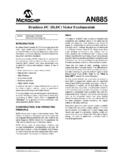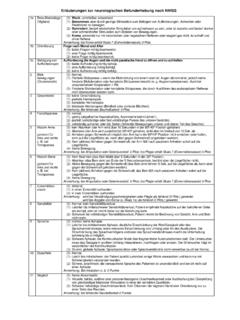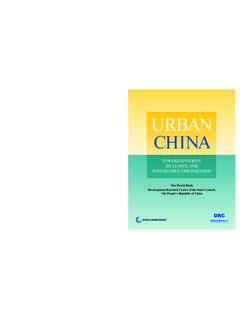Transcription of Silver water disinfection and toxicity 2014V2 - WHO
1 Centre for Research into Environment and Health Silver : water disinfection and toxicity Dr Lorna Fewtrell Spring 2014 i Silver : water disinfection and toxicity Spring 2014 Contents Contents List of abbreviations 1. Background 2. Introduction Antimicrobial properties Nanoparticles water -related applications 3. water disinfection efficacy Ionic Silver applications Efficacy of ionic Silver for disinfection of potable water Copper/ Silver applications Silver nanoparticle applications Silver -coated ceramic filter applications 4. Silver toxicity Absorption, distribution and excretion Inhalation studies Ingestion studies Injection studies Human exposure In vivo toxicity Inhalation Ingestion Dermal In vitro toxicity Liver Lung Brain and the blood-brain-barrier Gut Kidney Blood Skin Macrophages 5.
2 Quality of evidence 6. Discussion Efficacy toxicity AgNP In vitro toxicity In vitro to in vivo extrapolations In vivo toxicity Guidelines and regulations Environmental considerations 7. Conclusions 8. References Appendix 1: Disinfectant mode of action ii Silver : water disinfection and toxicity Spring 2014 List of abbreviations Ag Silver AgCl Silver chloride AgNO3 Silver nitrate AgNP Silver nanoparticles CICAD concise international chemical assessment document DLS direct light scattering DNA deoxyribonucleic acid EC50 half maximal effective dose GSH glutathione HRT hydraulic retention time ic initial concentration IC50 half maximal inhibitory concentration LC50 median lethal dose dose required to kill half the members of a test population after a specified test duration LDH lactate dehydrogenase MIC minimum inhibitory concentration NO nitric oxide PCNA proliferating cell nuclear antigen POU point-of-use PVP polyvinylpyrrolidone ROS reactive oxygen species SOD superoxide dismutase TEM transmission electron microscopy Spring 2014 1 Silver .
3 water disinfection and toxicity 1. Background This literature review, on the use of Silver (Ag) as a water disinfectant and the toxicity of Silver , is designed as a background document (based on a literature review up to the end of July 2013) for the Expert Working Group on Drinking- water Guidelines and to provide the basis for the development of a short factsheet. The report considers both ionic Silver , Silver nanoparticles (AgNP) and copper/ Silver applications. The aim is to look at the literature to determine: Is Silver an effective water disinfectant (does it work)? Is Silver toxic (does it do you harm)? Is there enough evidence to make a judgement on the above? 2. Introduction Antimicrobial properties Silver has been known to have antibacterial properties since Roman times, however, the increased use of nanosilver in a range of (as yet largely) experimental drinking- water treatment systems, its use in conjunction with ceramic filters and its perceived potential to be a water disinfectant that does not result in disinfection by-products (DBP) in the treated water have raised the profile of this chemical.
4 Silver and AgNP have been shown to have general ( not specifically water disinfection related) anti-bacterial properties against a range of both Gram-negative ( Acinetobacter, Escherichia, Pseudomonas, Salmonella and Vibrio) and Gram-positive bacteria ( Bacillus, Clostridium, Enterococcus, Listeria, Staphylococcus and Streptococcus) Wijnhoven et al. (2009). Some researchers have also demonstrated that fungi, such as Aspergillus niger, Candida albicans and Saccharomyces cerevisia, are sensitive to Silver (reviewed by Marambio-Jones and Hoek, 2010). In addition, a number of studies have suggested a biocidal action of AgNP against hepatitis B virus (Lu et al., 2008), HIV-1 (Elechiguerra et al., 2005), syncital virus (Sun et al., 2008) and murine norovirus (De Gusseme et al., 2010). Nanoparticles According to a review issued by the European Commission (2013) and cited by Bondarenko et al.
5 (2013), nanomaterial is defined as a natural, incidental or manufactured material containing particles, in an unbound state or as an aggregate or as an agglomerate and where, for 50% or more of the particles in the number size distribution, one or more of the external dimensions is in the size range 1-100nm. In the scientific literature, nanoparticles are usually defined as particles having one or more dimensions in the order of 100nm or less (Moore et al., 2006). Although the terminology may be relatively new, the use of AgNP is not (Nowack et al., 2011), with the first report of nanosilver probably being in 1889, when Lea reported the synthesis of a citrate-stabilised Silver colloid (which has an average particle size between 7 and 9nm). The most common method of producing AgNP is the chemical reduction of a Silver salt (often AgNO3) dissolved in water with a reducing compound such as sodium borohydride, citrate, glucose, hydrazine and ascorbate (Marambio-Jones and Hoek, 2010).
6 There is, however, an almost bewildering array of different manufacturing methods (including spark discharging, electrochemical reduction, solution irradiation and cryochemical synthesis) some of which have been outlined by Marambio-Jones and Hoek (2010). In addition to different manufacturing methods, different capping or stabilising agents may be used; these are generally used to prevent the AgNP from aggregating or agglomerating (Ema et al., 2010) and common examples include polyvinylpyrrolidone (PVP) and citrate (V lker et al., 2013). The different methods employed in the manufacturing process result in Spring 2014 2 Silver : water disinfection and toxicity AgNP with different sizes (typically <50nm), shapes ( spheres, rods and cubes) and characteristics. water -related applications In terms of water - disinfection -related applications, Silver is most commonly used in domestic water filters (either to reduce the level of biofilm growth within the filter or as an additional level of treatment).
7 It is also quite commonly used in conjunction with copper ionization as a preventative measure against colonization of Legionella spp. in hospital hot water systems. AgNP are currently being tested in a number of experimental point-of-use (POU) treatment systems and ionic Silver has been investigated for its potential for use as a secondary disinfectant (to reduce levels of chlorine) in drinking- water supplies. Silver ions (in combination with both copper and chlorine) have also been investigated for use in swimming pool disinfection . 3. water disinfection efficacy Numerous studies have been conducted on the disinfection efficacy of Silver and AgNP applications against a range of microorganisms found in water . Although the majority of these have focused on bacterial disinfection , some have also looked at the impact on bacteriophages and viruses. In addition to the material below, which focuses on water disinfection , there is also a short section (Appendix 1) on the general disinfectant mode of action of Ag and AgNP.
8 Ionic Silver applications Efficacy of ionic Silver for disinfection of potable water In the studies outlined below Silver ion (Ag+) efficacy (generated from Silver salts [AgNO3, AgCl] or produced electrolytically) was tested against a range of bacteria and the inactivation was principally assessed by the log reduction in bacterial numbers. Initial bacterial concentrations ranged from cells/ml up to x 107 cells/ml. Hwang et al. (2007) looked at the efficacy of Silver ions (up to 100 g/l), derived from Silver nitrate, against Legionella pneumophila, Pseudomonas aeruginosa and Escherichia coli (all at x 107 cells/ml) in synthetic drinking- water (pH 7, temperature 25 C). After a three hour contact time with the highest concentration of Silver the following log reductions were reported: log reduction - L. pneumophila; 4 log reduction P. aeruginosa; 7 log reduction E.
9 Coli. Similar work was conducted by Huang et al. (2008), where the efficacy of Silver ions, derived from AgCl, against 3 x 106 cfu/ml of P. aeruginosa, Stenotrophomonas maltophilia and Acinetobacter baumannii was investigated. A 5 log reduction in P. aeruginosa was seen with 80 g/l Ag (the highest concentration used) after 12 hours. S. maltophilia was more sensitive to Ag, with a 5 log reduction seen after 6 hours when exposed to 80 g/l. For A. baumannii, however, a 5 log reduction was only seen after 72 hours exposure to 80 g/l Ag. Silvestry-Rodriguez et al. (2007) investigated the inactivation of Pseudomonas aeruginosa and Aeromonas hydrophila by Silver in tap water , with a view to assessing the possibility for using Silver as a secondary disinfectant to replace or reduce the level of chlorine. Dechlorinated municipal water (obtained from a groundwater source) was seeded with 106 cfu/ml bacteria and Silver nitrate added to a concentration of 100 g/l.
10 Experiments were performed at pH 7 and pH 9 at 24 C for both bacterial species and at 4 C for P. aeruginosa. In addition, 3 mg/l humic acid was added to the dechlorinated tap water (to simulate a surface water source). Inactivation of the bacteria was time Spring 2014 3 Silver : water disinfection and toxicity and temperature dependent and after 8 to 9 hours of exposure to 100 g/l Silver at 24 C, there was more than a 6 log reduction in both bacteria (at 4 C a log reduction in P. aeruginosa was seen only after 24 hours). Silver was found to be almost as effective in reducing bacteria in the presence of humic acid ( log reduction in P. aeruginosa at pH 7, 24 C after 8 hours in the presence of 3mg/l humic acid). This group also looked at the potential for exposure to Silver (100 g/l) to reduce biofilm formation in drinking- water distribution systems (Silvestry-Rodriguez et al.)
















